Lines of Experience
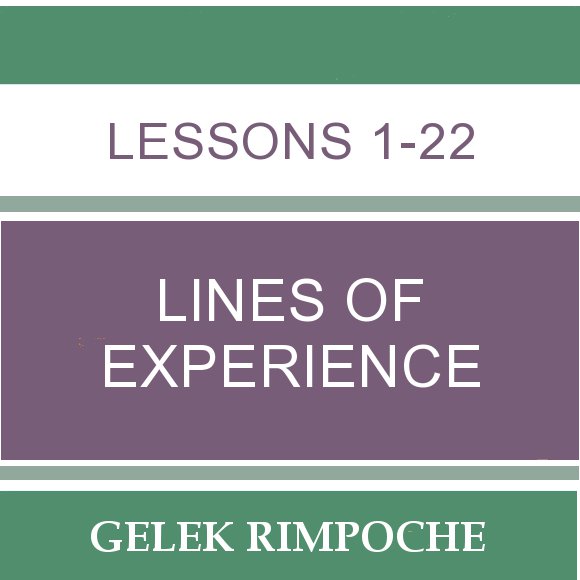
The Root Text: Lines of Experience: The Abbreviated Points of the Graded Path Lam-rimbsdus-don, By Je Tsongkhapa.
Gelek Rimpoche is working from the 2nd Dalai Lama’s commentary on Je Tsongkhapa’s, LINES OF EXPERIENCE; recorded at a 2003 weekend retreat called: The Songs of Inner Experience given in Garrison, NY.
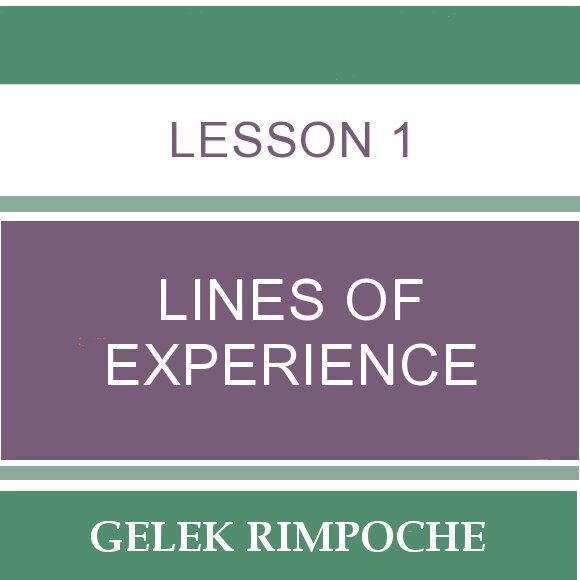
Lesson 1: Lines of Experience
Lesson Number 1 of 22 - Lines of Experience
Gelek Rimpoche begins the lesson by discussing authenticity as it pertains to Buddhist thought. “If I created something” he says “it is authentic to me. But, that is not what we are talking about here.” He shows how authenticity must be traced back through an active lineage to Buddha. Active in the sense that it is more than information; it is an unbroken combination of information and practice. He also discusses how Buddha’s teachings were originally recorded after his death and placed in three baskets (wisdom, morality and metaphysics). There is additional discussion
of the three scopes and three yanas and a warning of caution about confusing them.
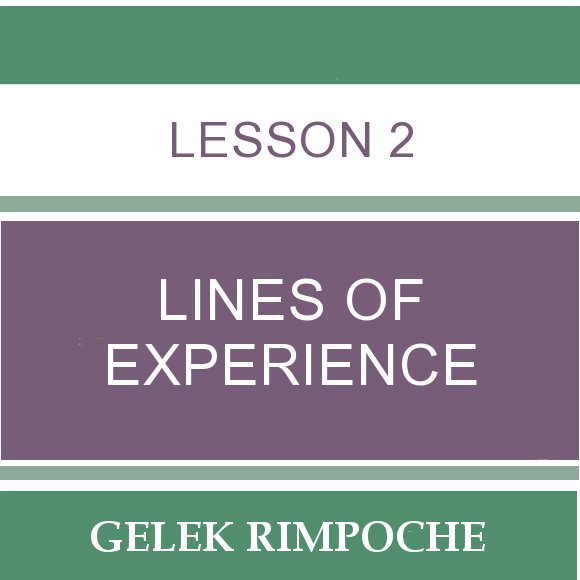
Lesson 2: Lines of Experience
Lesson Number 2 of 22 - Lines of Experience
Gelek Rimpoche begins this lesson with more intimate stories about the immediate lineage and some of his personal experiences having received this teaching 30 times. He elaborates on the lineage prayer by examining in detail key Tibetan phrases. He touches on the extraordinary qualities of a Buddha body. Finally he closes with a discussion of the opening verse stressing the difference between the perceiving reality as it is and perceiving directly what it is. For Buddhas there is no separation while we experience unavoidable distortions.
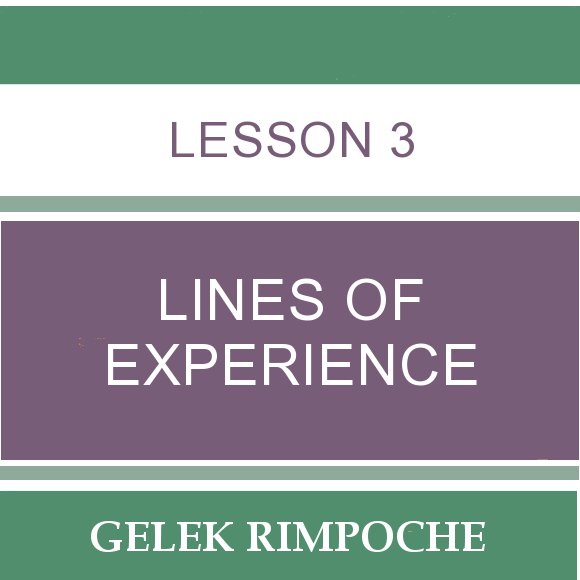
Lesson 3: Lines of Experience:
Lesson Number 3 of 22 - Lines of Experience
In this lesson, Gelek Rimpoche gives an in-depth explanation of the meaning behind prostration and how and why it is applied in the Lam Rim Lineage Prayer. He places particular emphasis on the “three brothers” the founders of the Kadampa tradition, and describes their location on the lineage tree.
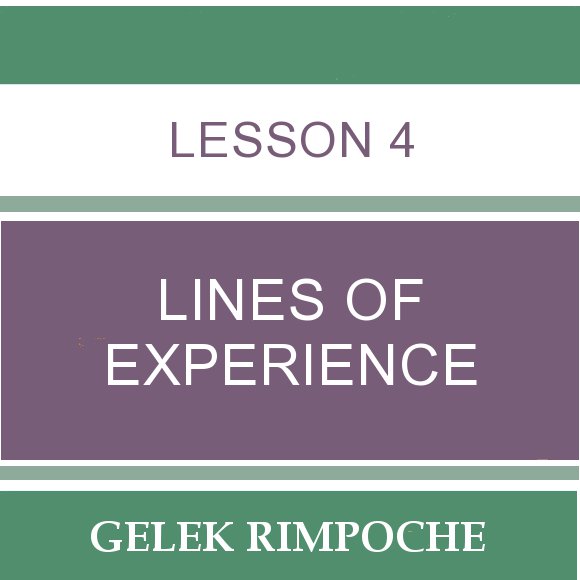
Lesson 4: Lines of Experience
Lesson Number 4 of 22 - Lines of Experience
Rimpoche makes the focus of this lesson the lineage and why that is important. He explains the two qualities of lineage as: 1) it provides the force or the power without which there is only information, and 2) it follows an unbroken line directly back to Buddha . He discusses Tsongkhapa’s two disciples and describes his own teachers. In doing so, he sketches out his own lineage for us. He completes the praise and begins the actual practice by introducing the 4 outstanding qualities of this particular Lam Rim.
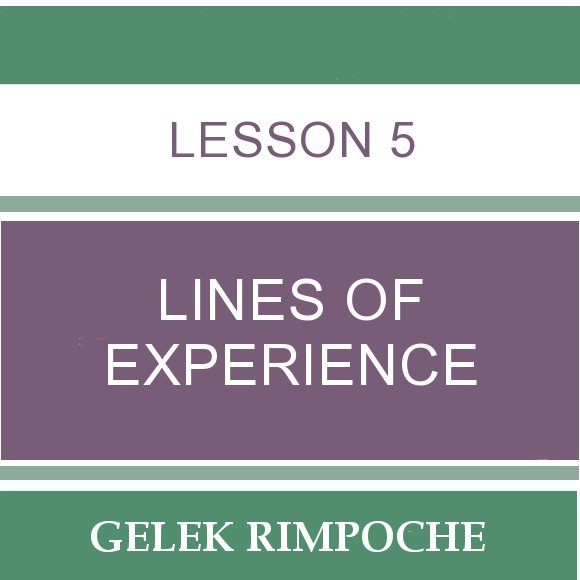
Lesson 5: Lines of Experience
Lesson Number 5 of 22 - Lines of Experience
In this lesson Gelek Rimpoche reviews the key points that lead up to the actual practice before discussing the role of making offerings. He describes the outer, inner, secret, suchness, and practice offerings individually. He closes by suggesting that purification is linked to confession and stresses its importance. At the very end he introduces the 4 powers practitioners have to purify karma.
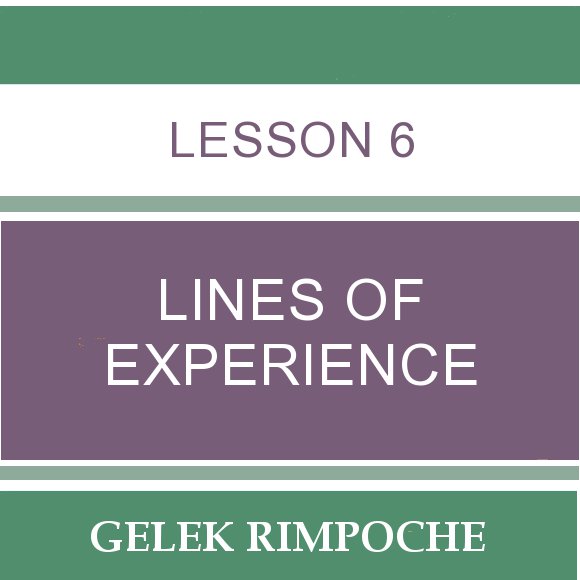
Lesson 6: Lines of Experience
Lesson Number 6 of 22 - Lines of Experience
Rimpoche continues with the 4 powers (regret, non-repeat, the power of truth, and the antidote action) in this lesson. He closes the purification component by describing a visualization for the field of merit and discusses other parts of the 7 Limb practice: rejoicing in virtues, requesting to remain, asking for guidance, and dedicating our efforts.
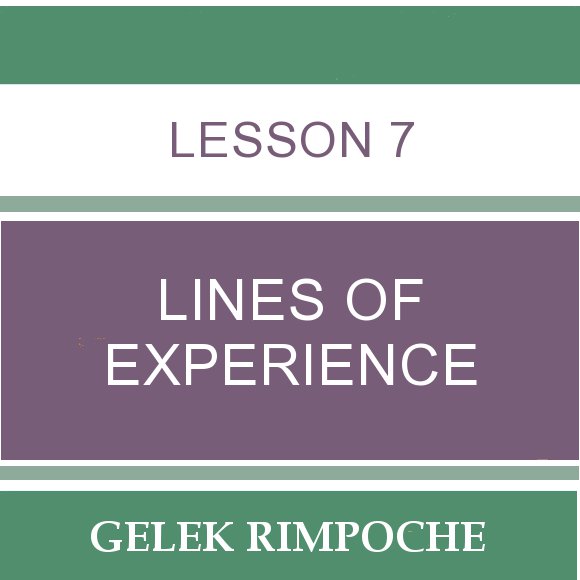
Lesson 7: Lines of Experience
Lesson Number 7 of 22 - Lines of Experience
In this lesson Rimpoche engages the 7th verse from Lines of Experience by talking about the qualities a student must have: they must be open-minded, intelligent, interested, and posses the correct motivation. He takes great pains to distinguish the rigor required to teach Dharma verses the way we may think about teaching in an ordinary context.
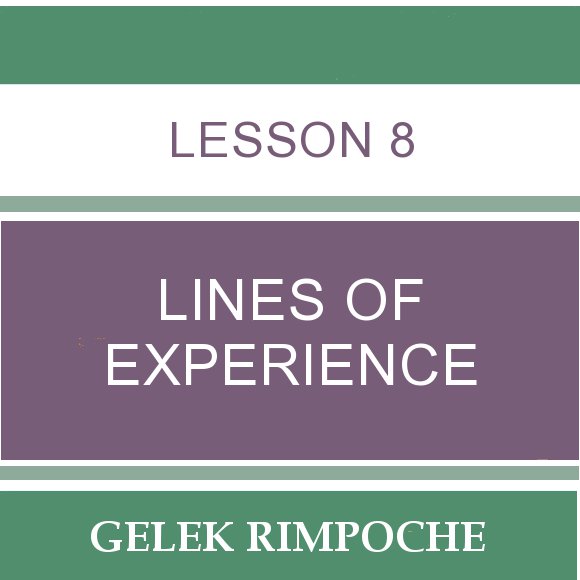
Lesson 8: Lines of Experience
Lesson Number 8 of 22 - Lines of Experience
After completing the 7 Limb component, Gelek Rimpoche reviews the qualities of practitioners and their mentors, the field of merit, and the 4 immeasurables. The root guru devotional mind he establishes through: invocation, the 3 paths practitioners may take, and provides an illustration using Marpa and Naropa.
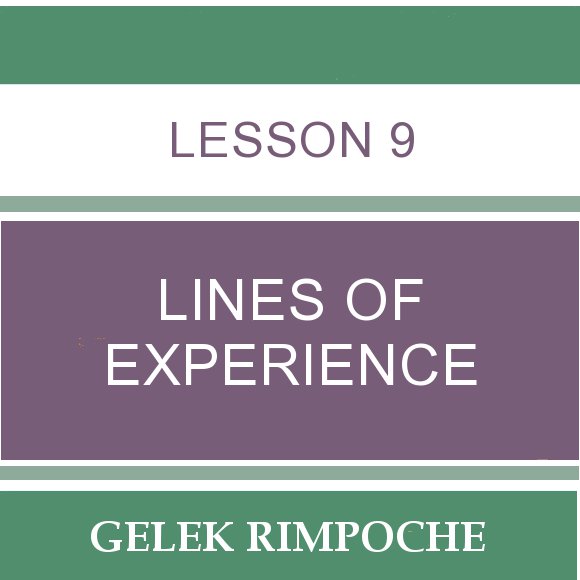
Lesson 9: Lines of Experience
Lesson Number 9 of 22 - Lines of Experience
In this lesson, Gelek Rimpoche stresses the importance of developing intelligent faith. He describes this faith as being the seed of all our development. The conclusion we arrive at about the validity of our faith becomes the ground for our shamata meditation. It is from this ground that we encounter the true nature of reality.
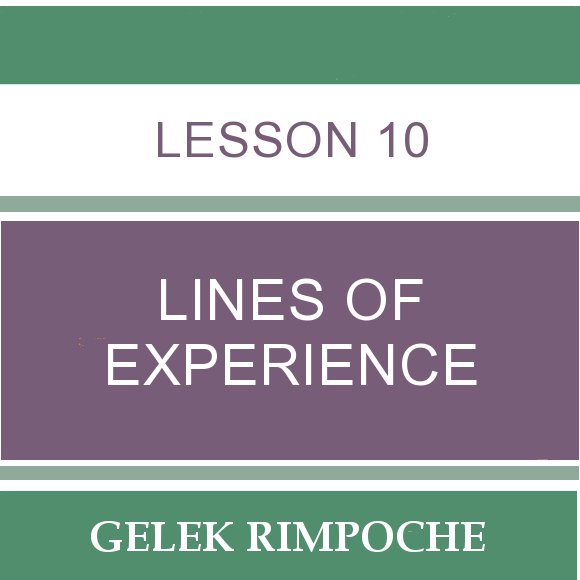
Lesson 10: Lines of Experience
Lesson Number 10 of 22 - Lines of Experience
Gelek Rimpoche moves from intelligent faith into the preciousness of human life in this lesson. He couples this rare, precious quality of human life with the certainty of death. From the sobriety of holding both life’s enormous possibility and inevitable brevity the practitioner must resolve with great determination to at least have a good future life. He discusses reincarnation in terms of cause and effect.
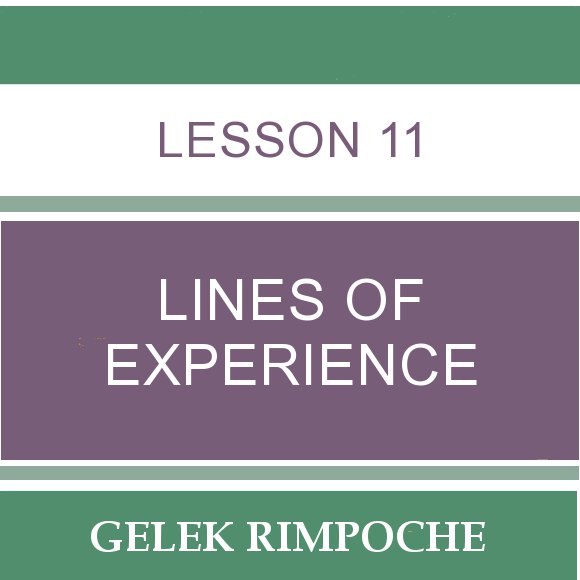
Lesson 11: Lines of Experience
Lesson Number 11 of 22 - Lines of Experience
Gelek Rimpoche returns to reincarnation in this lesson giving advice on controlling karma. He lays out what constitutes a complete karma, and the ways one experiences karma’s result.
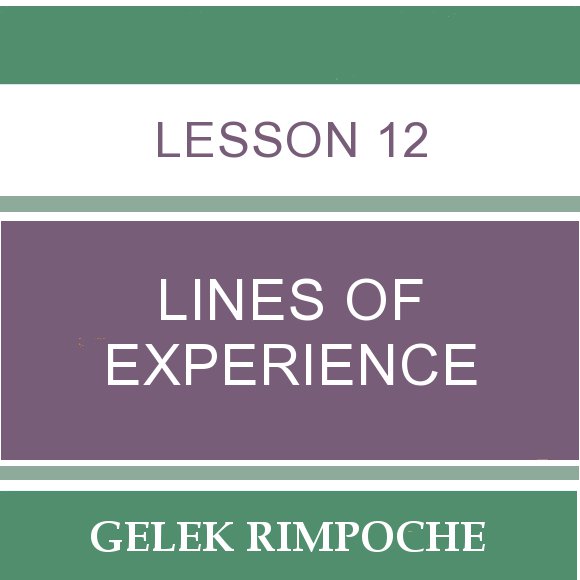
Lesson 12: Lines of Experience
Lesson Number 12 of 22 - Lines of Experience
After firmly establishing that karma is definite, Rimpoche introduces impermanence in this lesson. He discusses the role impermanence plays in purification and dedication. Because of impermanence there is no negativity that can’t be purified and all our positive actions can be magnified through dedicating the effort.
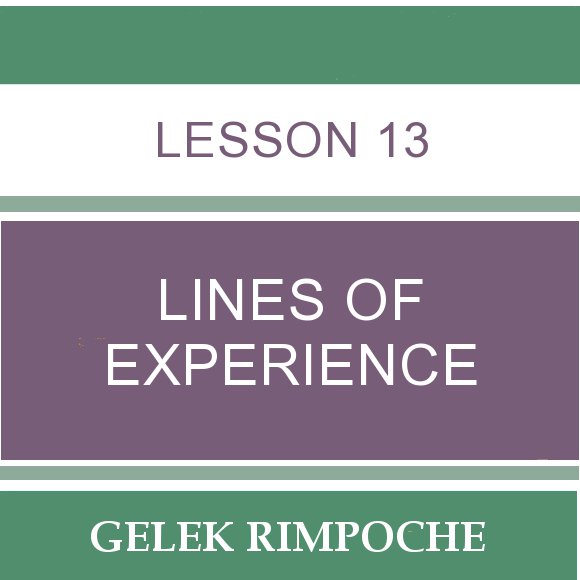
Lesson 13: Lines of Experience
Lesson Number 13 of 22 - Lines of Experience
In this lesson, Gelek Rimpoche reviews the outline through verse 12. He then concludes the small (or lower) scope motivation and suggests we can gauge our progress by noticing a shift in our motivation.
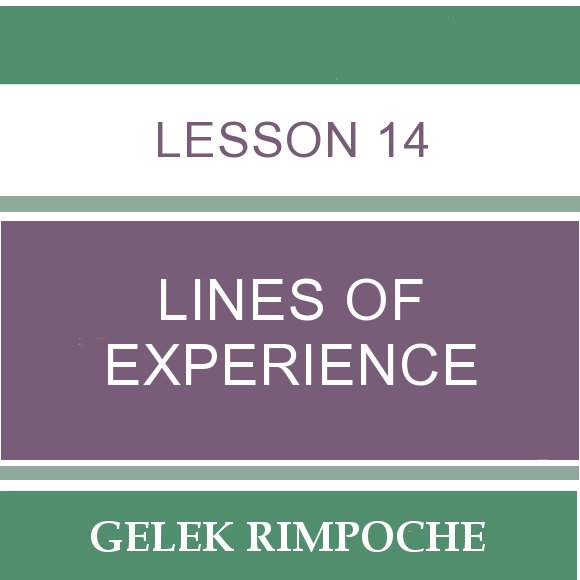
Lesson 14: Lines of Experience
Lesson Number 14 of 22 - Lines of Experience
In this lesson Rimpoche introduces the medium scope where the motivation becomes self liberation. He describes why we want that kind of motivation… to escape suffering. He talks about the four noble truths and the different ways they are taught. He discusses the kinds of suffering and why it is important to recognize and remember them.
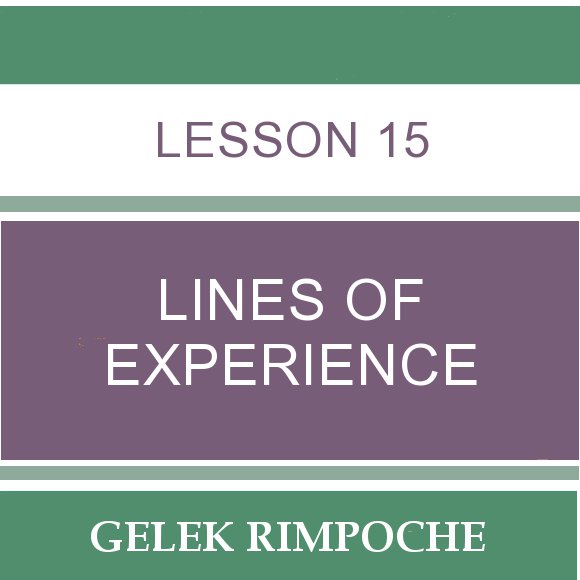
Lesson 15: Lines of Experience
Lesson Number 15 of 22 - Lines of Experience
In this lesson, Gelek Rimpoche addresses the difficulties that arise in recognizing suffering. The topic of ignorance is approached from several different angles and illustrated with stories. Delusion is linked to negative emotions and the karma that results from them. Ego is the enemy that is incapable of seeing things as they really are. Wisdom is recognizing things the way they actually are. Wisdom destroys the ego. Rimpoche closes with instructions on practicing up to this point.
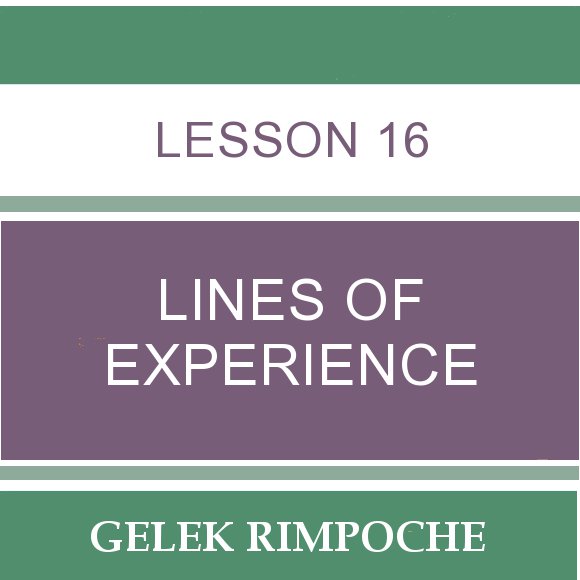
Lesson 16: Lines of Experience
Lesson Number 16 of 22 - Lines of Experience
At this point, Gelek Rimpoche concludes the medium scope suggesting that it is the three higher trainings (morality, concentration, and wisdom) that prompt our motivation to “get out of samsara like a burning house”. The motivation beyond self-liberation is to entertain total enlightenment as a possibility. Toward that end, Rimpoche next carefully introduces the topic of bodhimind. This is the special mind that allows us to see all other beings with the intimate connection of a mother and child.
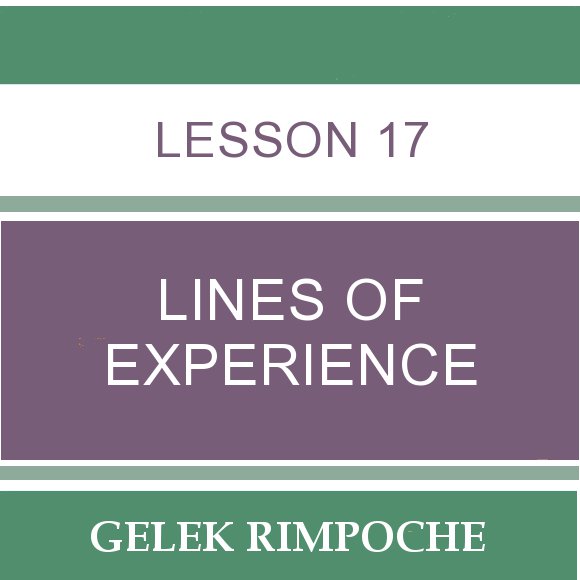
Lesson 17: Lines of Experience
Lesson Number 17 of 22 - Lines of Experience
In this lesson, Rimpoche forwards the discussion of bodhimind by focusing on the development of equanimity. He makes a distinction between developing and maintaining. Developing rises from the determination of the motivation just as maintaining rises from the commitment to purifying negativities.
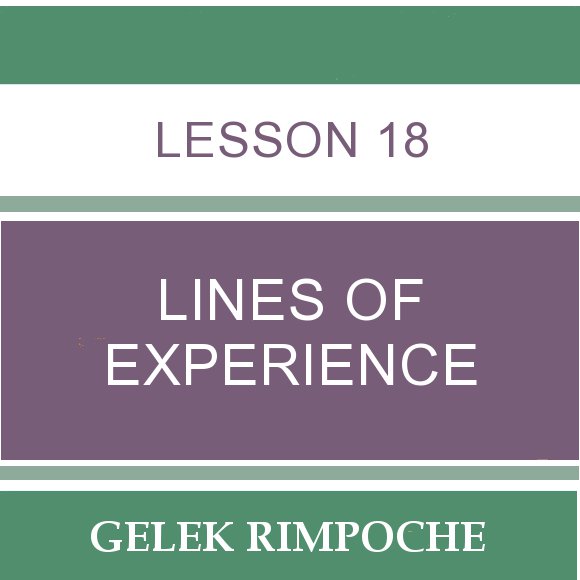
Lesson 18: Lines of Experience
Lesson Number 18 of 22 - Lines of Experience
Here, Gelek Rimpoche revisits verses 15 -18 explaining how to meditate through the filter of the 6 paramitas. Generosity, morality, patience, enthusiasm, concentration, and wisdom are described as the “beauty” of the bodhimind. The mind is transformed into action.
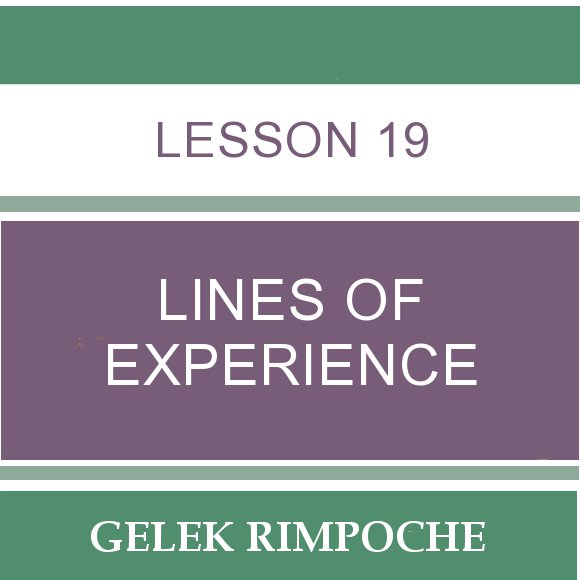
Lesson 19: Lines of Experience
Lesson Number 19 of 22 - Lines of Experience
In this lesson Gelek Rimpoche discusses single-pointed concentration, which he calls “The king of mind”. He describes the unwavering character of single-pointed concentration, the challenges to obtaining it, and the antidotes to those challenges. He explains that even the joy of obtaining such a mind will not in itself lead to liberation. He closes explaining the union of concentration and wisdom.
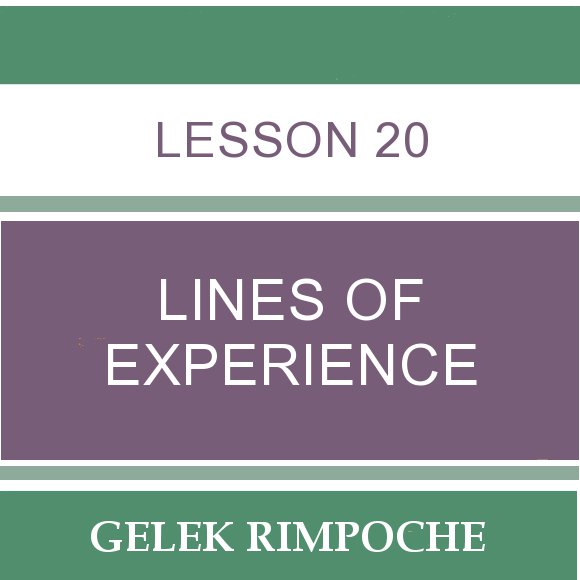
Lesson 20: Lines of Experience
Lesson Number 20 of 22 - Lines of Experience
Here, Gelek Rimpoche leads us through an analytical meditation on how to establish the emptiness of self and phenomena. He stresses to not fall into existentialist or nihilistic thinking. He shows how interdependent nature is the key to seeing emptiness. He describes in great detail the self to which we grasp exists as a collection and it is collection that has a function that can match or conflict with the label we impute upon it. The relative truth of phenomena and the absolute truth of phenomena must function together instead of contradicting.
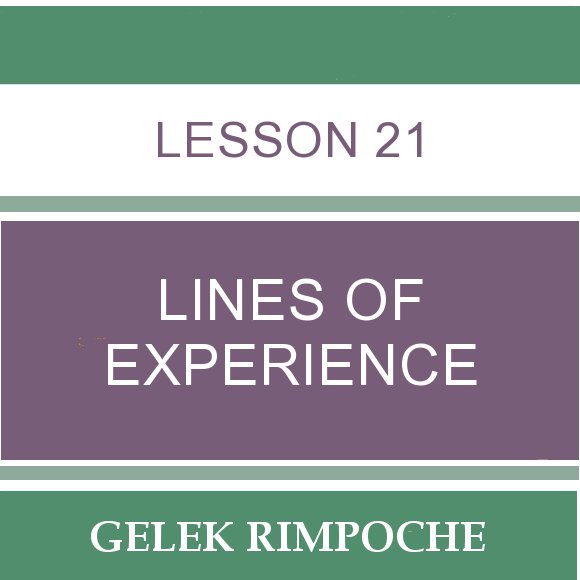
Lesson 21: Lines of Experience
Lesson Number 21 of 22 - Lines of Experience
In this lesson, Gelek Rimpoche instructs practitioners on how to meditate on emptiness. He describes how to bring concentration and wisdom together, through the classic meditation on the five skandas. He then discusses the ‘aftermath’ of this meditation, in which our world can seem like a ‘magician’s show, or a movie.
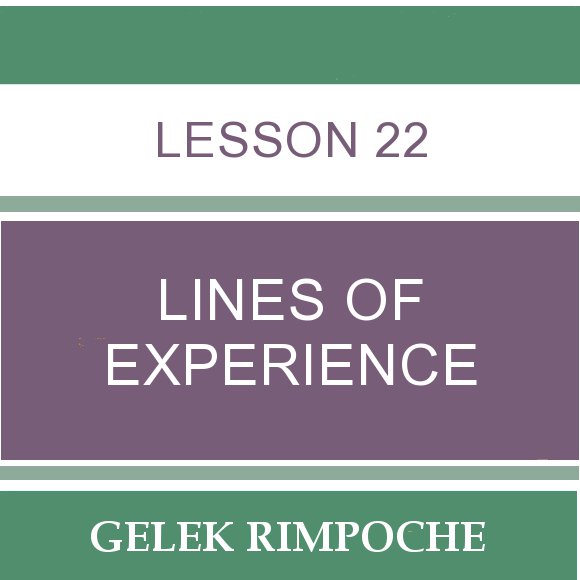
Lesson 22: Lines of Experience
Lesson Number 22 of 22 - Lines of Experience
In the final lesson of this series, Gelek Rimpoche focuses on how the combination of concentration and wisdom brings us to the many types of union on the vajrayana path. Just as one needs both body and mind to function in everyday life, so the clear light and illusion body must also be perfected and joined. He says “the true consort is the consort of inner clear light…and the true hero is the inner illusion body.” To develop such a union we must do concentrated and analytic meditation together.

